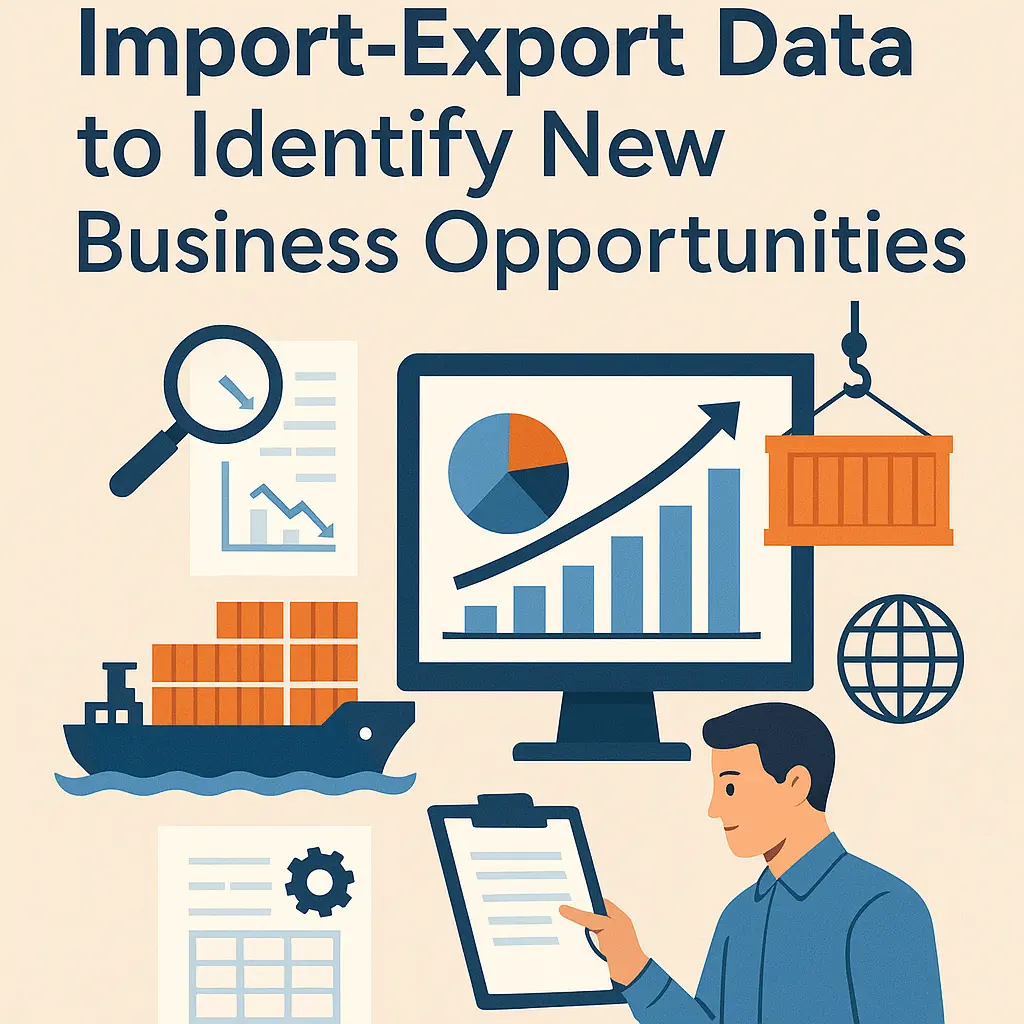A Practical Guide for SMEs and Traders

In a global economy where borders blur and trade links tighten, SMEs (Small and Medium Enterprises) and independent traders have a powerful tool at their disposal: import-export data. But it’s not just about numbers—it’s about patterns, insights, and discovering hidden opportunities before your competitors do.
This guide will help you understand how to interpret trade data to spot trends, analyze demand, and explore untapped markets, with real examples from actual HS codes and countries.
Why Import-Export Data Matters
Global trade data helps you answer key questions like:
- Which products are in demand in which country?
- Who are the major importers/exporters in your target market?
- What’s the seasonality or trend over the years?
- Are there any gaps in the supply chain you can tap into?
This kind of information enables smarter product launches, better pricing strategies, and even insights for supply chain improvements.
Step-by-Step: How to Analyze Import-Export Data
1. Choose the Right Product (Use HS Code)
Start with a specific product. Use the 6-digit Harmonized System Code (HS Code) to filter trade data. For example:
- HS Code 170230 – Glucose (Dextrose) in solid form
- HS Code 090111 – Coffee, not roasted, not decaffeinated
2. Identify Target Markets
Use trade databases (like EXIM Station, Import Export data reports for every traded commodity) to see where your product is in demand. Look at:
- Import volume by country
- Year-over-year growth
- Average price per unit
3. Spot Growth Trends
Filter the data for the last 3–5 years. Is there consistent growth? Did a country’s imports suddenly spike post-COVID? This could hint at an emerging opportunity.
4. Analyze Competition
Identify major exporting countries and companies. If you find a product that’s in high demand but has few suppliers, you might have a good entry point.
5. Compare Pricing
Check FOB/CIF prices across different countries. If your production cost is lower than the market average, that’s a potential profit margin.
Case Study 1: Indian SME Breaks into African Market – HS Code 170230
A glucose manufacturer in Gujarat wanted to expand globally. By analyzing HS Code 170230, they discovered:
- Nigeria imported over $18 million worth of dextrose in 2022.
- Only three major players controlled 70% of imports.
- The average import price per kg was $0.78, while the manufacturer’s production cost was $0.53.
Action Taken:
They reached out to small distributors in Lagos, sent samples, and priced just under market rate. Within 6 months, they secured a consistent monthly order of 40 MT.
Case Study 2: Vietnam’s Demand for Turmeric – HS Code 091030
An Indian spice exporter used EXIM data and found that Vietnam’s imports of turmeric increased by 37% in 2023. Key insights:
- India was already the top supplier, but smaller buyers were underserved.
- Vietnam imported $4.3 million worth of turmeric last year.
- Exporters from Erode and Nizamabad were already trading, but not covering small-scale buyers.
Action Taken:
The exporter created a network of buyers via B2B platforms and offered customized packaging for Vietnamese distributors. It turned into a $120,000/year trade.
Key Tips for SMEs and Traders
- Focus on Niche Products
Don’t always go for high-volume HS codes. Smaller categories often have less competition and higher margins. - Use Country-Specific Data
India’s export portal (DGFT), Pakistan’s TDAP, or the U.S. Census Bureau trade data can give country-specific reports for deeper analysis. - Look at Port-Level Data
Sometimes, logistics constraints or port capacity can guide you to alternate entry points in a country. - Monitor Trade Policies
New FTAs, anti-dumping duties, or tariff changes can open or close markets overnight—track news from WTO, government bulletins, and regional trade blocs.
Tools You Can Use
| Tool | Purpose |
| EXIM Station | Tailored reports for chemicals and industrial products |
| ITC Trade Map | Country-wise and HS code-specific data |
| India’s DGFT Portal | Export incentives and shipment records |
| Google Trends + Trade Data | Combine keyword trends with trade trends for demand forecasting |
Final Thoughts
Analyzing import-export data isn’t just for large corporations. With the right approach and tools, even small traders and SMEs can decode data to unlock global opportunities. The key is not just seeing the numbers, but reading between the lines—identifying gaps, and acting before the rest of the market catches up.
As global trade becomes increasingly data-driven, those who can effectively interpret the data will lead the way.
